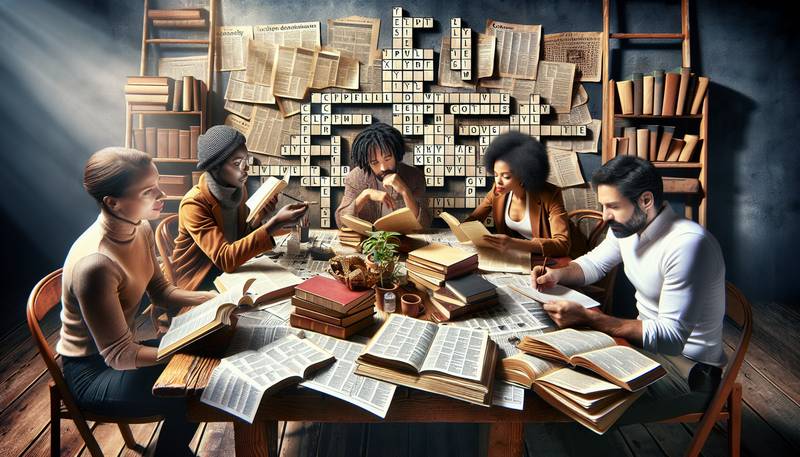Boosting Vocabulary Through Crossword Puzzle Creation

The Crossroads of Language and FunCreating crossword puzzles might be one of the most satisfying brain workouts ever conceived. It’s like a gym session for your vocabulary—with significantly less sweating and more coffee breaks. Picture yourself tackling that grid like a knight in shining armor, wielding a pencil instead of a sword, ready to conquer the realm of words. What could be better than flexing those linguistic muscles while simultaneously wondering why 'zebra' isn't in your daily vernacular? Why Crosswords? A Match Made in Word HeavenCrossword puzzles do more than just keep your grandma entertained on Sunday afternoons; they’re your golden ticket to expanding your vocabulary. Here’s how they work their magic:- Enhanced Memory: Remember that time you forgot the name of the restaurant you visited last summer? Well, crossword puzzles help jog that memory and many others by repeatedly exposing you to words in a fun context.
- Contextual Learning: Ever wondered about the backstory of 'serendipity'? Crosswords don’t just ask you for a definition; they throw you clues that lead you to the answer. It’s like a scavenger hunt, but with less risk of encountering squirrels with attitude.
- Diverse Vocabulary: From Shakespearean references to obscure scientific terms, crosswords introduce you to a buffet of language. Who knew that knowing the word 'quasar' could come in handy during a casual dinner party?
Crafting Your Own Crosswords: The Art of WordplayCreating a crossword puzzle is like baking a cake, except instead of flour and eggs, you’re mixing letters and clues. Here’s a roadmap to start your puzzling adventure:1. Choose a Theme: What do you love? Movies? Food? Your pet goldfish? Selecting a theme is the first step. Yes, your cat’s name can inspire a whole crossword. Just remember: “feline fury” might be a bit too on-the-nose for a clue. 2. Decide on a Grid Size: Smaller grids are like cute kittens—adorable but less challenging. Larger grids? Think of them as the majestic lion of the puzzle world. More clues, more fun, and perhaps a wild roar or two when you get stumped.3. Select Your Words: Choose words that fit your theme but also keep in mind their length. While 'supercalifragilisticexpialidocious' has a nice ring to it, fitting it in is another story—unless you’re planning on building a crossword that’s the equivalent of a word marathon.4. Create Clues: This is where your creativity shines. Crafting clues is like writing jokes—some will land, and others will leave people scratching their heads. Just remember, no one wants to spend ten minutes figuring out why “red fruit” leads to “tomato” when “apple” would have been a breeze.5. Test Your Puzzle: Now, give it a whirl. This is where you find out if you’re a puzzle maestro or if you’ve accidentally created a riddle worthy of an ancient oracle. Sharing it with friends can lead to fun banter—or a stern critique that begins with, “What were you thinking?”Put on Your Thinking Cap: The Benefits AwaitOnce you’ve created your crossword masterpiece, the real fun begins. Here’s why this activity is worth every minute:★ Improves Cognitive Skills: Engaging in crossword puzzles can enhance your problem-solving abilities and critical thinking skills. Who needs a gym membership when you have a verbal workout waiting for you?★ Fosters Creativity: As you weave words and clues together, you’re not just building a puzzle; you’re crafting an experience. It’s like cooking but without the risk of burning the kitchen down. Well, mostly.★ Social Interaction: Try challenging friends to complete your creation. Enjoy the friendly banter, and remember, if they get stuck, you can always say you were just trying to help them “expand their horizons”—or their patience levels.All Worded Out: A Final ThoughtCreating crosswords is more than just a way to boost your vocabulary; it’s a journey filled with creativity, laughter, and perhaps the occasional head-scratching moment. Who knew that an activity often associated with leisurely mornings could serve as a powerful tool in your linguistic arsenal? So grab your pencil, unleash your inner wordsmith, and remember: every great puzzle begins with a single clue.
|
|







